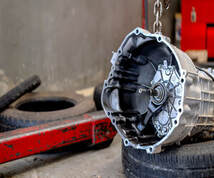Transmission Repair Needham, MA

Looking for a transmission repair shop near me? Look no further than Needham Service Center for all your transmission and auto repair needs. Don't procrastinate getting your transmission problems diagnosed; the problem could become a much bigger problem the longer you wait.
Call (781) 444-5100 to schedule service today!
At Needham Service Center, we provide transmission diagnostics and repair services to Needham, MA, Needham Heights, MA, Wellesley, MA, Newton, MA, and the surrounding area.
Call (781) 444-5100 to schedule service today!
At Needham Service Center, we provide transmission diagnostics and repair services to Needham, MA, Needham Heights, MA, Wellesley, MA, Newton, MA, and the surrounding area.
Is Your Vehicle Experiencing Problems With The Transmission?
You may need service if your car has problems, such as difficulty shifting gears or slipping out of gear. Other common transmission issues that require service include hesitation when accelerating, bucking, or burning smells. The performance of your automobile will be noticeable if your transmission needs service.
Why Checking Your Transmission Fluid is Crucial for Your Vehicle
Transmission fluid is vital in keeping your vehicle's transmission running smoothly. It is responsible for lubricating the moving parts inside the transmission, ensuring they do not prematurely overheat or wear down. Without proper lubrication, your vehicle's transmission could suffer severe damage, leading to costly repairs or a replacement.
What is Transmission Fluid?
Transmission fluid is a lubricant that helps to protect the transmission system by keeping the gears, clutches, and bearings from grinding against each other. It also helps to transfer the heat generated by the gears to the transmission cooler, preventing your vehicle from overheating. Maintaining the appropriate level and quality of transmission fluid is essential to keep your vehicle running at its best.
How Often Should You Check Your Transmission Fluid?
You should check your vehicle's transmission fluid level at least once a month or every 3,000 miles, whichever comes first. If your driving habits are more severe or your car is more than ten years old, you should check your transmission fluid level more frequently.
How to Check Your Transmission Fluid
To check your vehicle's transmission fluid level, follow these simple steps:
Tips and Tricks for Upkeep
If your transmission fluid is low, add the appropriate fluid level to keep it at the proper level. Overfilling can damage your vehicle, so add only what is needed. Using the correct type of transmission fluid specified in your vehicle's owner's manual is also essential.
Potential Issues and How to Address Them
If your transmission fluid is low or dirty, it can lead to transmission slipping, difficulty shifting gears, or even complete transmission failure. Be proactive in maintaining the appropriate level and quality of transmission fluid in your vehicle to prevent these issues from happening.
Take Action Today
As a responsible vehicle owner, checking your transmission fluid should be essential to routine maintenance. Regularly checking and replacing your transmission fluid can help extend the life of your vehicle, prevent costly repairs or replacements, and keep you safe on the road. So, what are you waiting for? Take action today and make it a habit to check your vehicle's transmission fluid regularly.
Need Help?
If you need help, you can contact us at (781) 444-5100 to check your fluid or diagnose problems you may be having with the transmission in your car.
What is Transmission Fluid?
Transmission fluid is a lubricant that helps to protect the transmission system by keeping the gears, clutches, and bearings from grinding against each other. It also helps to transfer the heat generated by the gears to the transmission cooler, preventing your vehicle from overheating. Maintaining the appropriate level and quality of transmission fluid is essential to keep your vehicle running at its best.
How Often Should You Check Your Transmission Fluid?
You should check your vehicle's transmission fluid level at least once a month or every 3,000 miles, whichever comes first. If your driving habits are more severe or your car is more than ten years old, you should check your transmission fluid level more frequently.
How to Check Your Transmission Fluid
To check your vehicle's transmission fluid level, follow these simple steps:
- Park your car on a level surface, and make sure the engine is running.
- Locate the transmission fluid dipstick, typically located near the back of the engine compartment and marked with a yellow or red handle.
- Remove the dipstick, and wipe it clean with a rag or paper towel.
- Reinsert the dipstick all the way back in, and then remove it again.
- Check the level of the fluid on the dipstick. If the level is below the "Add" or "Full" mark, you'll need to add more transmission fluid.
Tips and Tricks for Upkeep
If your transmission fluid is low, add the appropriate fluid level to keep it at the proper level. Overfilling can damage your vehicle, so add only what is needed. Using the correct type of transmission fluid specified in your vehicle's owner's manual is also essential.
Potential Issues and How to Address Them
If your transmission fluid is low or dirty, it can lead to transmission slipping, difficulty shifting gears, or even complete transmission failure. Be proactive in maintaining the appropriate level and quality of transmission fluid in your vehicle to prevent these issues from happening.
Take Action Today
As a responsible vehicle owner, checking your transmission fluid should be essential to routine maintenance. Regularly checking and replacing your transmission fluid can help extend the life of your vehicle, prevent costly repairs or replacements, and keep you safe on the road. So, what are you waiting for? Take action today and make it a habit to check your vehicle's transmission fluid regularly.
Need Help?
If you need help, you can contact us at (781) 444-5100 to check your fluid or diagnose problems you may be having with the transmission in your car.
